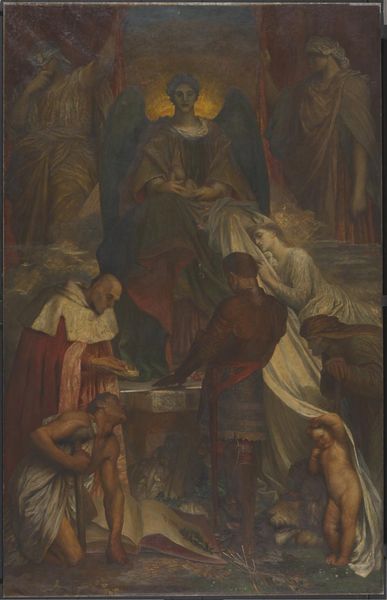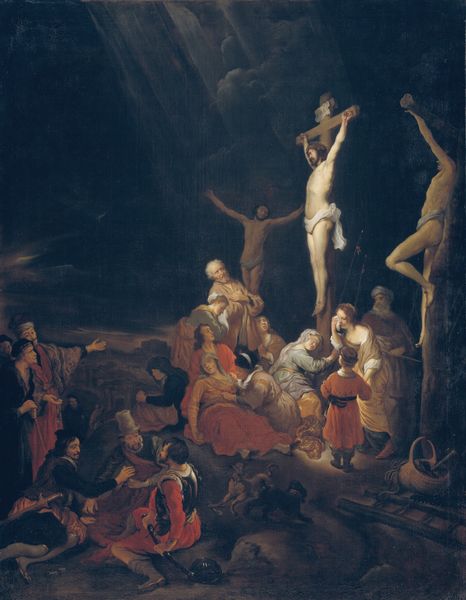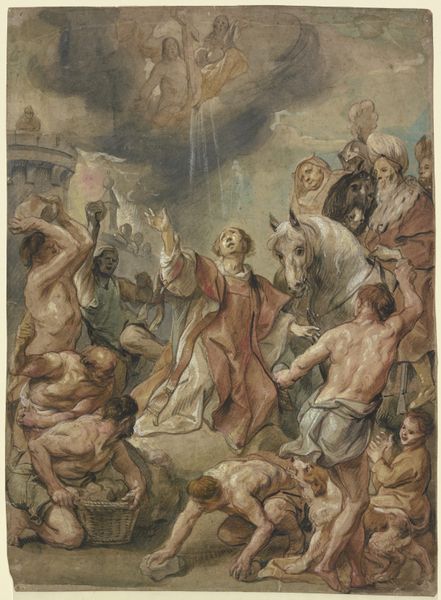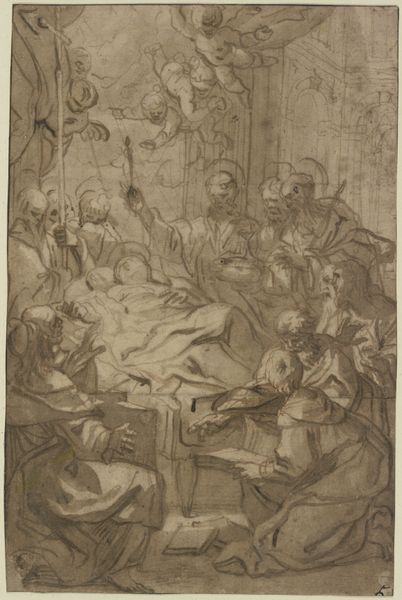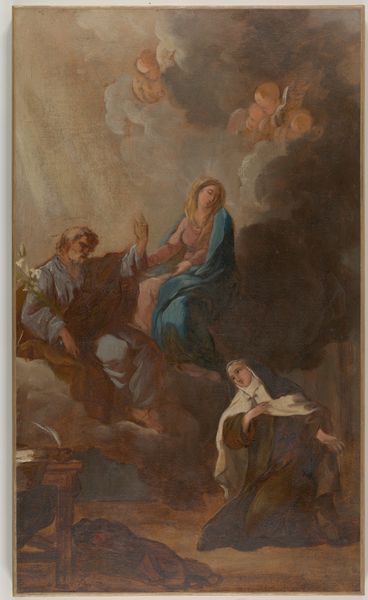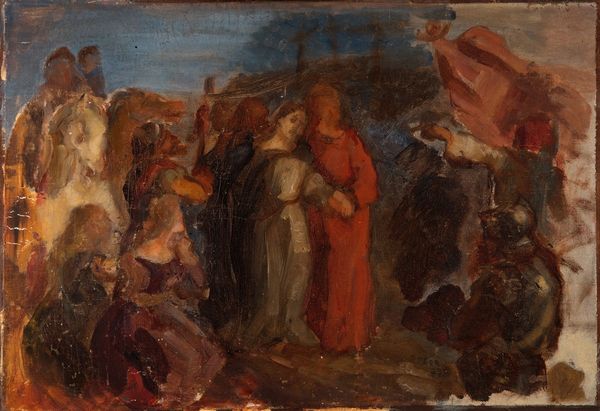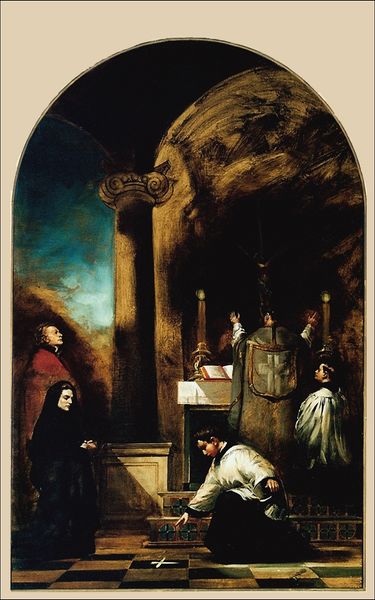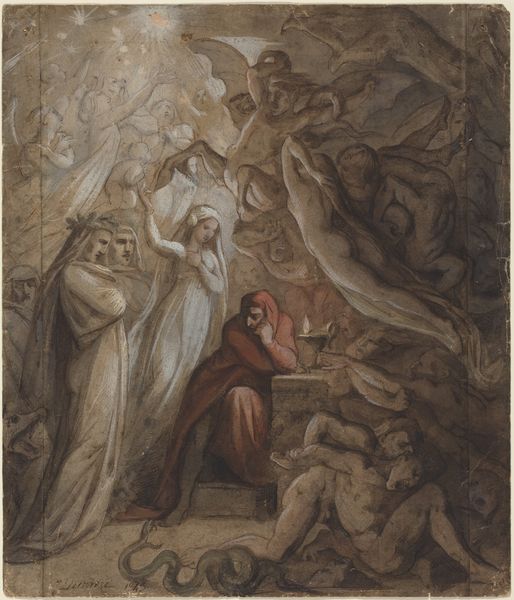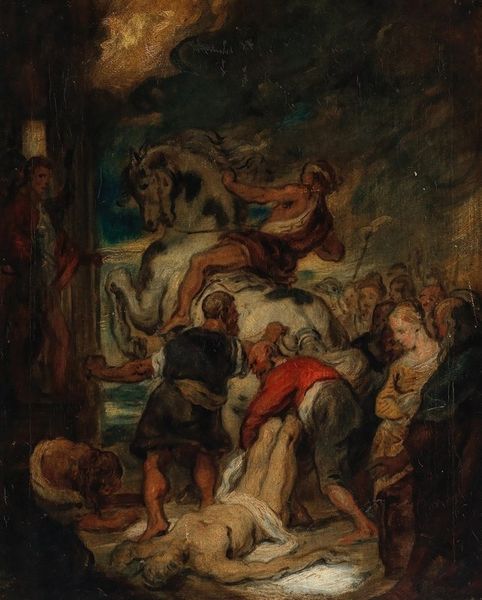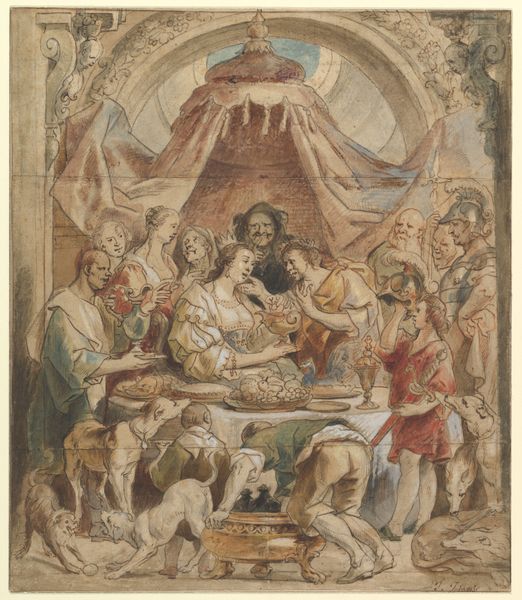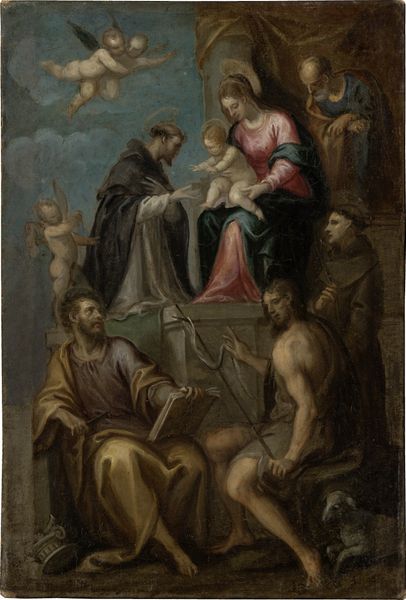
Christ the Redeemer, Christ calls the afflicted to himself (Sketch) 1877
0:00
0:00
albertmaignan
Petit Palais, Paris, France
oil-paint
#
narrative-art
#
oil-paint
#
figuration
#
oil painting
#
history-painting
#
academic-art
Dimensions: 45.6 x 37 cm
Copyright: Public domain
Curator: Editor: Here we have Albert Maignan's 1877 oil sketch, "Christ the Redeemer, Christ calls the afflicted to himself." The theatrical composition, with the idealized figure of Christ presiding over a crowd of sufferers, gives the painting a rather staged feeling to me. What strikes you about this piece? Curator: What's immediately evident to me is the clear display of labour—the labor of academic painting itself. Notice the underpainting still visible in areas. It exposes the process, the very materiality of art production. How does seeing it as a sketch rather than a finished piece change your understanding of its purpose, of its making? Editor: That's a great point. Knowing it’s a sketch does shift my focus. It becomes less about the finished product, about some grand, completed vision. More about… the steps taken. But how does this materiality speak to a broader social context? Curator: Well, think about the 19th-century art market. Academic painting was a commodity. Artists like Maignan were part of a system. Understanding the materiality – the canvas, the paints, the techniques employed - forces us to acknowledge this economic dimension. Even religious works participated in cycles of production and consumption. How might these factors have shaped Maignan’s approach? Editor: So, it's less about spiritual devotion and more about...craft and its market value? A religious message packaged within the prevailing academic style to appeal to a patron, to sell a painting, to be part of this materialist cultural complex...That does shift things. Curator: Precisely. Examining the means of production brings what may seem ethereal – faith, redemption – down to earth, to the world of studios, commissions, and the economic realities of the artist’s world. Considering art this way brings up some fundamental questions. Do you see any value in this approach? Editor: Definitely. It challenges this notion of the artist as purely inspired, highlighting the craft and the socio-economic factors that shaped their creations. It gives us a better insight. I am glad to think of it as part of our everyday culture. Curator: Absolutely, it is a great shift. And I've become more appreciative of the skill required for paintings like this.
Comments
No comments
Be the first to comment and join the conversation on the ultimate creative platform.

